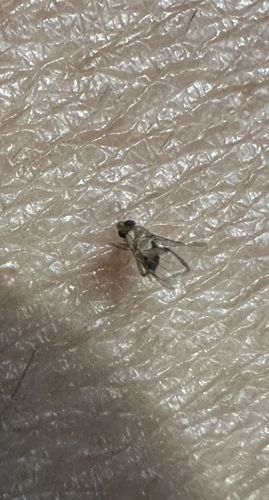Fruit Fly
Scientific Name: Drosophila melanogaster (or other Drosophila species)
Order & Family: Diptera, Drosophilidae
Size: 2-4 mm (0.08-0.16 inches)

Natural Habitat
Commonly found in kitchens, restaurants, and other areas where ripe or fermenting fruits and vegetables are present. They are attracted to decaying organic matter.
Diet & Feeding
Primarily feed on fermenting fruits, vegetables, and other organic matter containing yeast and bacteria. Adults also feed on the surface moisture of these foods.
Behavior Patterns
Fruit flies have a rapid life cycle, completing development from egg to adult in about 8-15 days under optimal conditions. Females lay eggs on ripening or fermenting fruit. Adults are attracted to light and often fly in erratic patterns. They are very prolific breeders, leading to quick infestations.
Risks & Benefits
Risks: Can be a nuisance in homes and food establishments, contaminating food with their larvae and waste products. They can also carry bacteria and yeast from one surface to another. Benefits: Drosophila melanogaster is a very important model organism in genetic research and has contributed significantly to our understanding of biology and disease.
Identified on: 9/15/2025